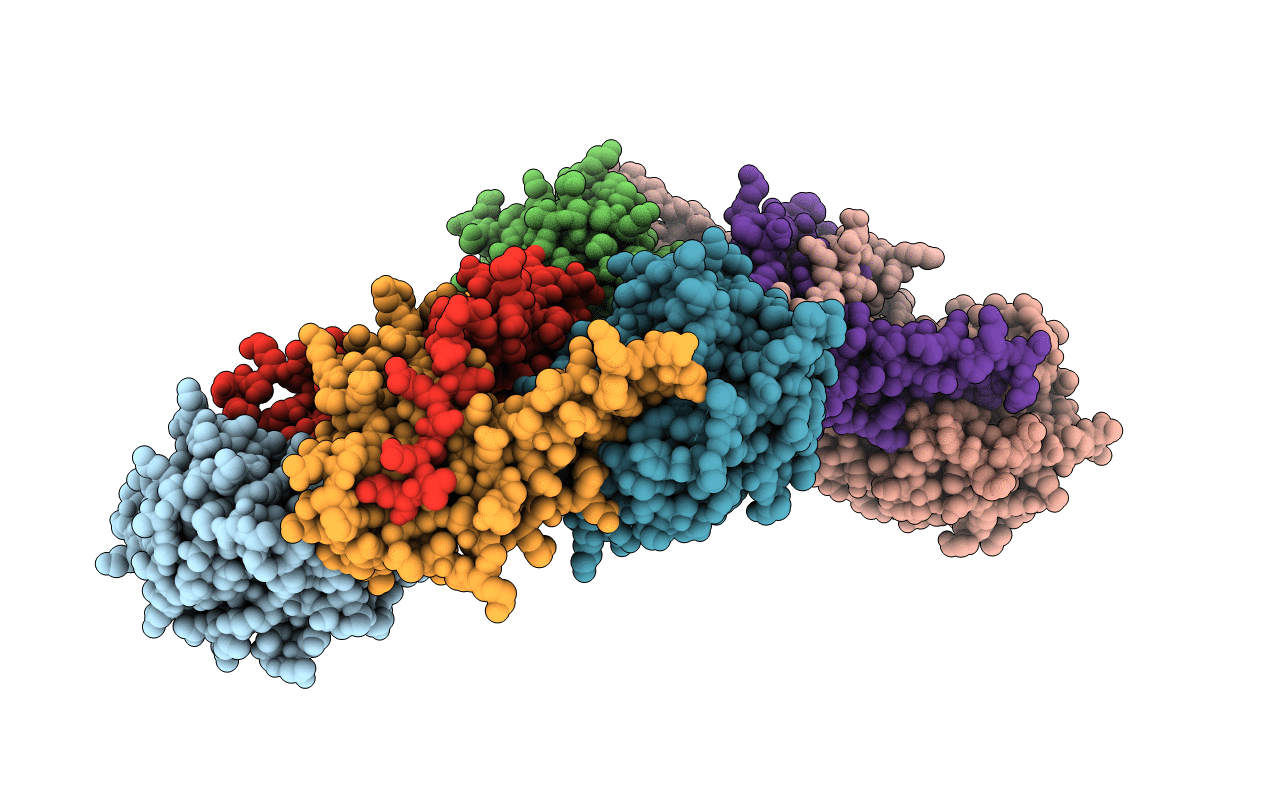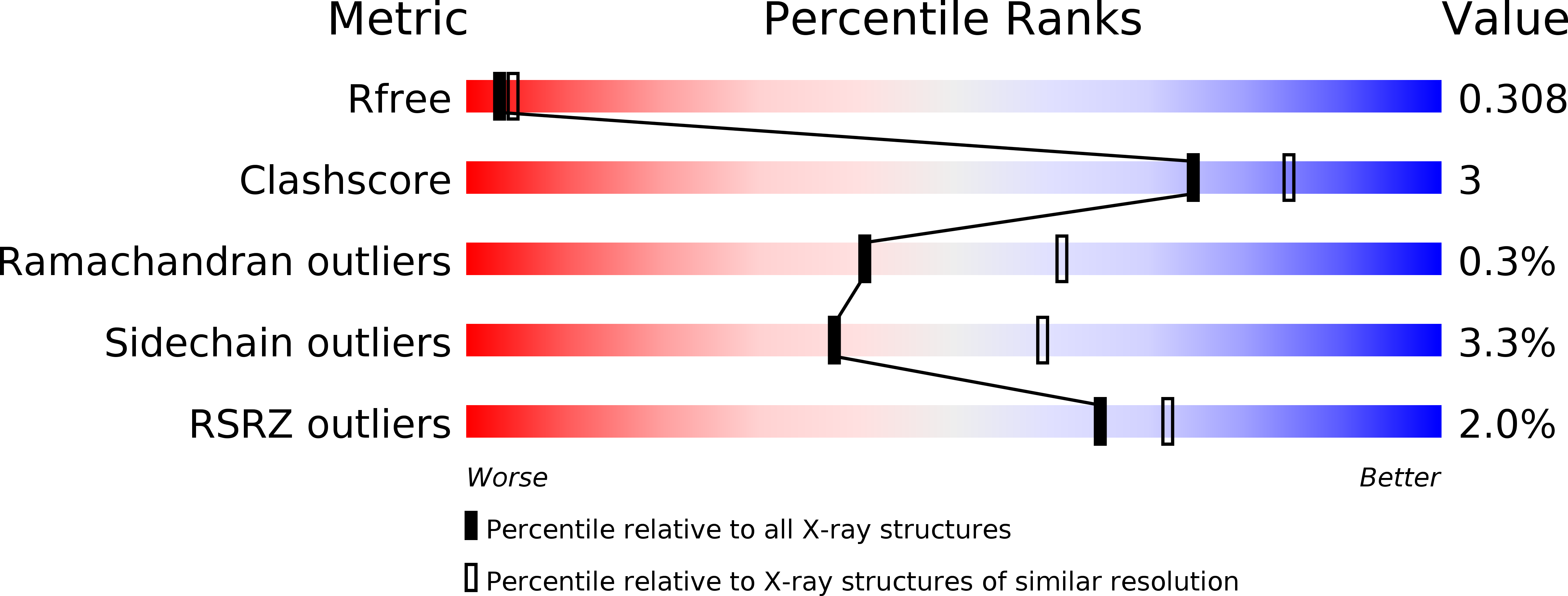
Deposition Date
2011-01-26
Release Date
2011-04-20
Last Version Date
2024-11-20
Entry Detail
PDB ID:
2Y6T
Keywords:
Title:
Molecular Recognition of Chymotrypsin by the Serine Protease Inhibitor Ecotin from Yersinia pestis
Biological Source:
Source Organism:
YERSINIA PSEUDOTUBERCULOSIS (Taxon ID: 502800)
BOS TAURUS (Taxon ID: 9913)
BOS TAURUS (Taxon ID: 9913)
Host Organism:
Method Details:
Experimental Method:
Resolution:
2.74 Å
R-Value Free:
0.31
R-Value Work:
0.24
R-Value Observed:
0.24
Space Group:
P 1 21 1


